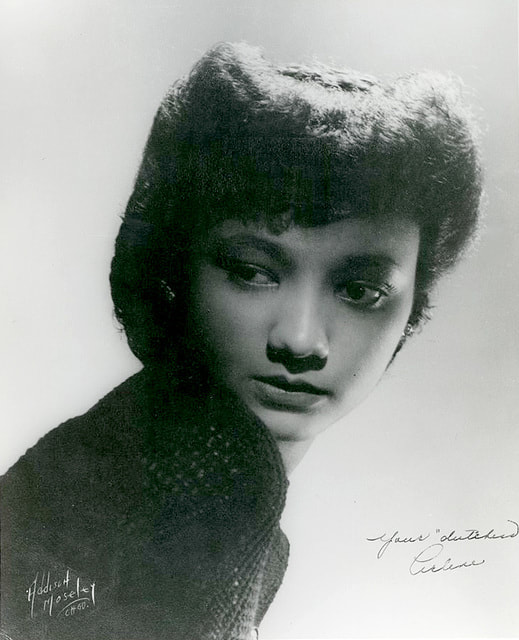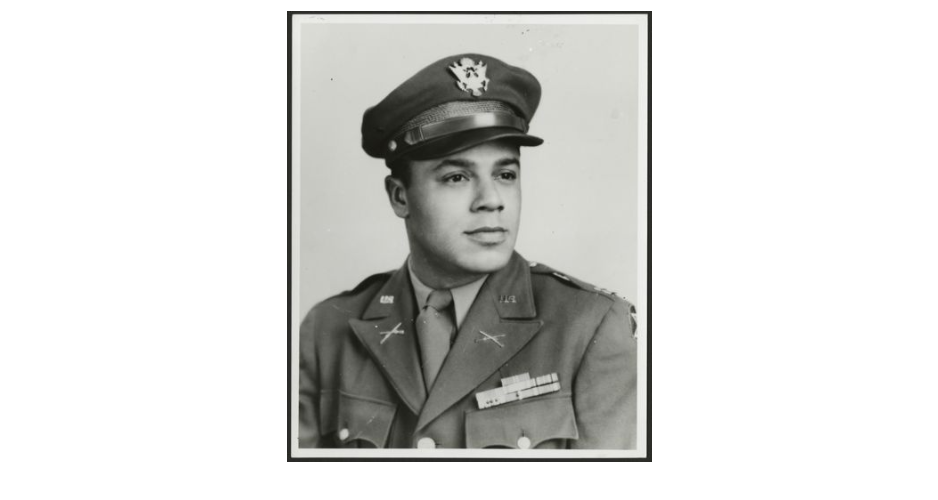|
I spend a good chunk of my time digging into the past, finding the names of women who deserve to be remembered and telling their stories. I love it when those stories take interesting twists and turns like Arlene Robert's. Her skill lies behind one of the biggest events in the history of humankind. She played a very tiny part, as did many women whose names we'll never know. We know Arlene's, in part, because her boyfriend painted her name on his fighter plane and survived WWII to tell about it. Arlene Roberts was much more than a pretty face. On summer break from the State University of Iowa in 1945, Arlene took a secretarial job at the University of Chicago. Assigned to the general pool of typists, Arlene distinguished herself for speed and accuracy and earned a promotion to an elite group of women working at the laboratory at the university's School of Metallurgy. The typists worked for several weeks on what they were told was a top-secret project. Even some of the scientists in the lab didn't know what it was. Arlene typed complicated scientific equations that made no sense to her on a strange aluminum-foil type paper. As the job came to a close, she was sequestered to type the final project plans. "When they announced we had been working on the atomic bomb, both scientists and staff members broke down and cried over what this horrible weapon could do," she remembered later. "We also knew that its use might be necessary to end the war." Meanwhile, a young soldier, James "Braddie" Morris was fighting the Japanese in the South Pacific. He had been, that is, until he came down a case of malaria that nearly killed him. Below: James "Braddie" Morris. (Iowa University Digital Library) James Morris, Jr, had proven himself, and helped desegregate the 6th Army "Alamo Force" a small unit of skilled men with specialized reconnaissance expertise. They acted as scouts, infiltrating enemy territory, sometimes swimming ashore to gather information before a battle. As the United States stood on standby preparing to invade the Japanese mainland, army intelligence predicted one million American men would be dead or wounded. Morris had recovered from malaria and would be a forward scout, his unit chosen to make the first amphibious landing. The US dropped the atomic bomb on Hiroshima, Japan, August 6, 1945, killing 140,000 people. The second bomb dropped on Nagasaki three days later killed 80,000 and forced the Japanese to surrender. The invasion was cancelled, and James Morris and his unit survived the war and went home. The following year he met Arlene at the University of Iowa. But it was another man who made Arlene's name famous during the war, and it was not for her contribution to the Manhattan Project that possible saved her future husband's life. That was a Tuskegee Airman, Captain Robert W. Williams who was shooting down German planes over Europe with the 332nd Fighter Group. Before the war, back in Davenport, Iowa, Robert Williams drove a little yellow convertible, catching the eye of of all the girls. But it was high school senior Arlene Roberts who he gave a ride home from school. When the war broke out, Robert left for Alabama to enroll in the Negro Pilot Training Program at the Tuskegee Institute. He wrote home to Arlene and she sent him a glamor shot of herself signed, Your 'Dutchess' Arlene. When he finished training, Robert went to Italy where he flew a P-51D Mustang fighter. Like all the pilots, he painted something personal on his plane, Your 'Dutchess' Arlene, right on the nose. You can't see it in the photo below, but there's replica installed outside the Des Moines airport. In March 1944, Captain Williams and the P-51D shot down one of the Luftwaffe’s Me 262 jet fighters and a pair of Fw 190s. He didn't get the girl, but was awarded the Distinguished Flying Cross, the Air Medal with six oak leaf clusters, and the Presidential Distinguished Unit Citation, among others. And he was played by Laurence Fishburne in the HBO feature The Tuskegee Airman (1995) for which he had written the screenplay. James Morris, Jr., our hero from the war in the Pacific won four bronze stars and came home to finish his law studies at the University of Iowa, where he and Arlene Roberts fell in love and married. The couple raised three sons in Des Moines, where he became the first black assistant county attorney. Des Moines was segregated socially, after raising her boys, Arlene became active with a group of women, different races and different religions, who worked to end prejudice, not only in their neighborhood and city, but across the country. They traveled thousands of miles telling their personal stories. In a 1964 interview Arlene said, “In order to do a good job, I must break the habit of a lifetime—that of keeping my true and hurt feelings hidden." Arlene spoke about her grade-school teacher who used the n-word in class when talking about slavery and who she feared that her sons would suffer psychological scars from the racism they encountered. A fellow panelist and Des Moines philanthropist Maddie Levitt said of Arlene “I think she is a quiet giant. She does her thing without a lot of outside approval.” Definitely more than a pretty face. Like my article today? Please tweet! Sources
https://www.facebook.com/aeroshipyard/posts/1308224312933795 https://cafriseabove.org/artifact/duchess-arlene/ https://cafriseabove.org/robert-w-williams/ ttps://digital.lib.uiowa.edu/islandora/object/ui%3Ajamesmorris_88 https://digital.lib.uiowa.edu/islandora/object/ui%3Aaawiowa_1296 https://digital.lib.uiowa.edu/islandora/object/ui%3Aaawiowa_1297 Des Moines Register and Tribune Company, "'Duchess Arlene' soars above race," February 21, 2006. Morris, Robert V., Black Faces of War: A Legacy of Honor from the American Revolution to Today, Zenith Press. Comments are closed.
|
I'm fascinated to discover little-known history, stories of people and events that provide a new perspective on why and how things happened, new voices that haven't been heard, insight into how the past brought us here today, and how it might guide us to a better future.
I also post here about my books and feature other authors and their books on compelling and important historical topics. Occasionally, I share what makes me happy, pictures of my garden, recipes I've made, events I've attended, people I've met. I'm always happy to hear from readers in the blog comments, by email or social media. Archives
September 2023
Categories
All
|






